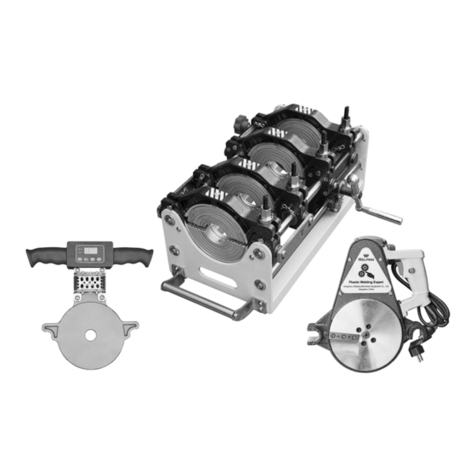
www.welpingtool.com
FEEL any changes in the way the equipment operates.
SEE problems with wiring and cables, hydraulic connections, or other equipment.
REPORT anything you see, feel, smell, or hear that is different from what you expect, or that
you think may be unsafe.
Work Area Safety
• Keep work area clean and well lit. Cluttered or dark areas invite accidents.
• Do not operate the butt welder in explosive atmospheres, such as in the presence of
flammable liquids, gases or dust. The heat may ignite the dust or fumes.
• Keep children and bystanders away while operating the butt welding machine. Distractions
can cause you to lose control.
Personal Safety
• Wear a hard hat, safety shoes, safety glasses, and other applicable personal protective
equipment.
• Remove hanging jewelry and rings, and do not wear loose-fitting clothing or long hair that
could catch on controls or moving machinery.
Electrical Safety
• Always ensure equipment is properly grounded. It is important to remember that if you are
working in a wet environment with electrical devices. Proper ground connections help to
minimize the chances of an electric shock.
• Frequently inspect electrical cords and unit for damage. Have damaged components
replaced and service performed by a qualified electrician.
• Do not abuse the cord. Keep cord away from heat, oil, sharp edges or moving parts.
Damaged or entangled cords increase the risk of electric shock.
NOTICE: Always connect units to the proper power source as listed on the unit, or in the
owner's manual. Use GFCI electrical connections when available or required.
Butt Fusion Machine Use and Care
• Facer blades are sharp and can cut. Never attempt to remove blades while the facer
(planing tool) is running, or is in the facing position between the clamps. Use care when
operating the facer, and when handling the unit.
• The heater is hot and will burn clothing and skin. Keep the heater in its insulated heater
stand or blanket when not in use, and use care when heating the pipes.
• Do not use the butt welder if the switch does not turn it ON and OFF. Any welder that
cannot be controlled with the switch is dangerous and must be repaired.
• Maintain butt welder and accessories. Check for misalignment or binding of moving parts,
breakage of parts and any other condition that may affect the operation. If damaged, have
the tool repaired before use. Many accidents are caused by poorly maintained tools.


























